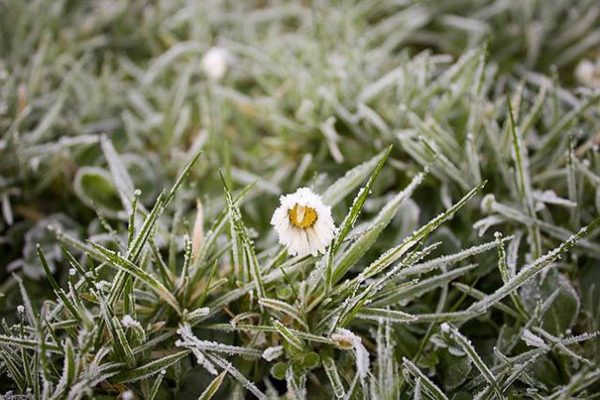
“Bundle up!” We all heard this from our moms when we went out to play in the winter snow and winds. The same advice applies to your tender and newer outdoor plantings. The frigid northern winds and freezing nighttime temps can damage or kill those perennials, shrubs, and trees that are more marginal in our Mid-Atlantic planting zones. If a plant is classified zone 8 or above, then it is wise to take a few minutes to evaluate it for winter protection needs. Here are the top methods to give your plantings a bit of warmth and relief this winter:
Take It Indoors
You may not have a greenhouse, but you probably have a garage, cellar, or protected porch. Sometimes all your potted tender plant needs is a sheltered spot for those worst weeks of the year. You can also wrap a blanket or burlap around the base of the pot to keep it insulated. Alternatively, group a bunch of containers and stuff the area with leaves.
Plant It Right
The warmest part of your yard is most likely at the base of a southern-facing wall. Plant your camellias, figs, and others in this spot of your zonal edge.
Mulch It
Pile up mulch around the base of the plant to give its root-zone a blanket of warmth. Grafted trees and shrubs especially are vulnerable to die-back, so provide extra mulching to your fruit trees and rose bushes now. Be sure to pull pack that mulch layer at the first signs of spring.
Cover It
If you have just a few small tender plants to cover or want to give an early start to next season, use a cloche or glass bell. (An assortment of Colonial-era cloches is pictured here.). You can make a modern cloche out of plastic soda bottles or milk jugs. Be sure to take them off or vent them during the day. To vent them, you can prop them up with a small stick or on stones.
Blanket It
Watch the local weather closely and on the coldest nights of the year, have old blankets and sheets on the ready to throw over your plants. Blankets and sheets are an excellent precaution to take on nights with an ice warning. Many plants that are solid Zone 6 and 7 can still suffer severe winter damage and breakage, so go ahead and cover them when there is an ice storm in the forecast. Then uncover when the danger of icing has passed.
Insulate It
Surround your most vulnerable plants with a metal cage (like your old tomato cages) or plastic mesh and stuff the frame full of leaves. You can also wrap the plant burlap tied with twine to achieve the same purpose. Then unwrap and unstuffy your plant in early spring.
Finally, if you find you have a real cold spot in your garden that is a frigid micro-climate, consider more long-term solutions for this spot. You can build a berm (earthen-wall) or stone wall to block some of the winds. You can plant a border of tall evergreens as a wind-break also. Consider also the next time you out a shed, house expansion, or other out-building that this may be the location to place it and thereby create a new, warmer micro-climate for your plantings.


